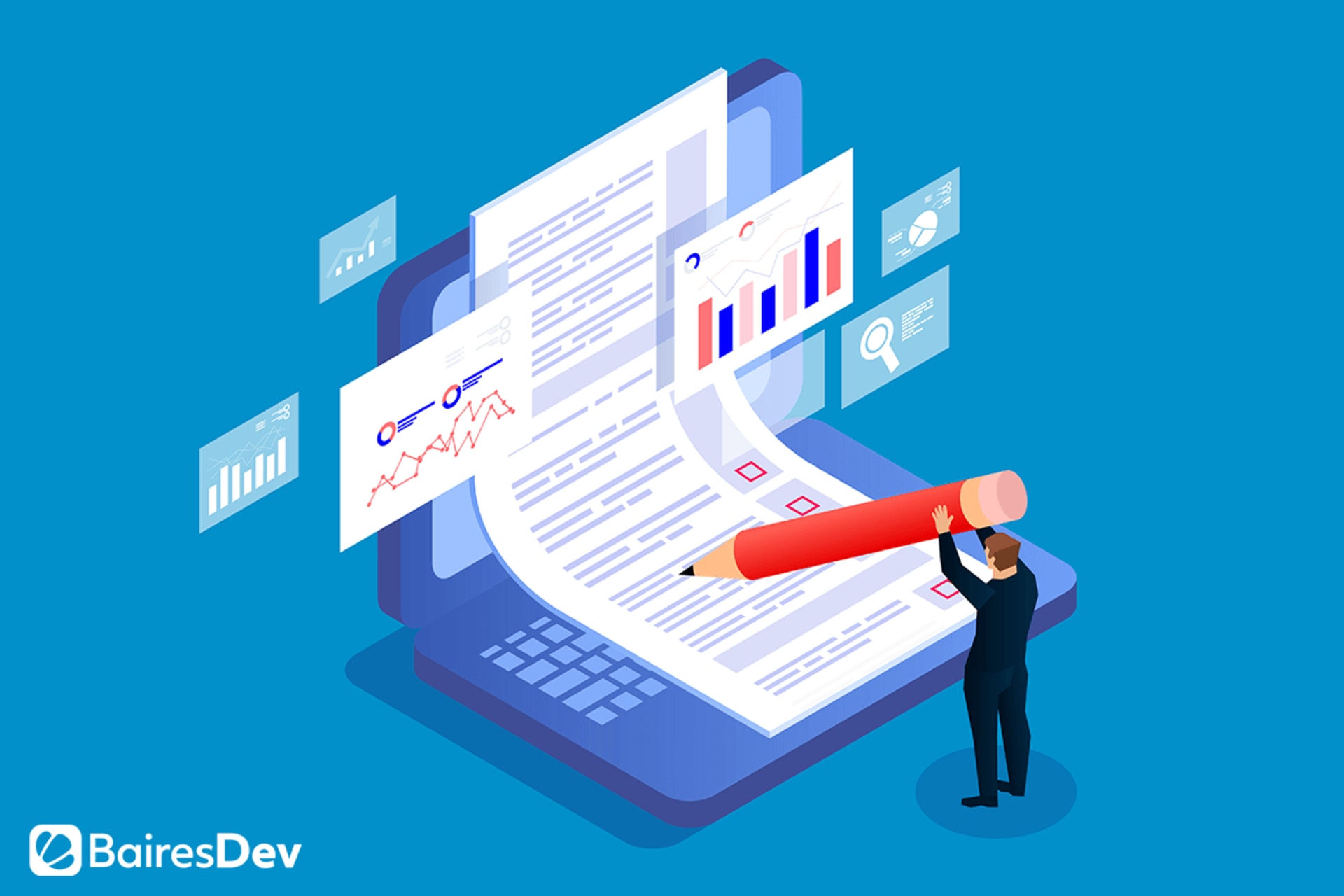One of the most (if not THE most) significant changes brought by the pandemic to the business landscape was the increasing interest in digital transformation. The shift has been massive. According to a recent survey, 50% of companies were thinking about digitizing the processes in the pre-COVID-19 days, compared to the 80% that now feels that accelerating their digital transformation process is a strategic must.
What’s more – in a year that saw companies slashing expenditures to keep their businesses afloat, worldwide spending on digital transformation technologies and services will still grow by 10.4% in 2020 to 1.3 trillion U.S. dollars, even with all the Coronavirus-related challenges. The fact that companies will keep investing in digital technologies is hardly a surprise. The stay-at-home orders forced most companies to digitize their processes and modernize their infrastructures – and do it quickly to address the demands of their respective audiences.
That’s why I can safely say that COVID-19 ushered in the era of digital acceleration. It’s true that digital acceleration wasn’t a phenomenon born out of the pandemic (truth be told, it’s a term that’s been making the rounds for years). But the global crisis finally put it on the mainstream table and sent a clear message to all business people out there: “The time where you could digitally transform your business at your own pace is gone. Today, you need to become digital-first, fast.”
That’s why digital acceleration makes more sense in the current scheme of things, as it highlights the need for scaling up the digital resources of companies everywhere but in the fastest possible way. It’s not that digital acceleration is the same as a digital transformation but faster. Digital acceleration also implies a new approach to how the adoption of new digital technologies is implemented.
Leaving Behind the Old Approach
If we were to understand digital acceleration as a quick digital transformation, then the process would mean updating highly complex systems and infrastructures or replacing them with upgraded alternatives in a short period of time. While that would be great, it’s also impossible.
Finding appropriate replacements for legacy systems more often than not means developing them from scratch, which can take a lot of time depending on the system’s complexity. Updating existing assets is equally tricky and the “need-it-ASAP” vibe that’s keeping the business world on edge today doesn’t help, as it pushes developers to work too quickly with outdated technologies, multiplying the potential risks and issues.
So, the approach that has companies scrambling to update their core technologies to achieve a successful digital transformation doesn’t cut it anymore. This means that we have to leave that old approach behind – or, at the very least, put it aside for calmer times when a slower digital adoption is more bearable. What should we put in its place to drive a true digital acceleration process, then? Data.
The Data-Driven Approach
As this article from BCG masterfully proposes, the new approach should decouple the digital business transformation from the core IT transformation. The idea is to see the digital acceleration process as composed of two separate transformations. On one hand, we would have the more traditional transformation: updating core systems and enriching the digital infrastructure with new tools. On the other hand, there would be a novel data layer that could provide the needed agility and the proper insights to deliver fast value.
Such a decoupling would allow a company to work on the needed revamp of core technologies while gaining value from data they already have. That sounds nice but there’s an inevitable question waiting in there: how can that data be actionable if the underlying systems aren’t up to date and, in fact, are mostly an obstacle to its proper use? The answer is actually fairly simple: by creating an alternative architecture on the cloud.
Using platforms already available in the cloud, companies can leverage the newest technologies (such as AI-powered algorithms and big data analytic tools) without having to wait until they are implemented in their core IT infrastructure. This solution is perfect for a digital acceleration process, as it provides the speed, agility, security, and scalability to meet the new market demands quickly while creating value from the start.
The data-driven approach offers a host of benefits, but there are a few that are more notable than others:
- It taps into the value of massive datasets quickly, with tools that are already available, preventing companies from having to rush the upgrading process of their IT infrastructure. This allows businesses to meet consumer demands fast and in the short-time while providing them with the opportunity to strategically plan their overhaul plan and execute it without any rushes.
- Increases the opportunities for innovation. Relieved from having to wait for the update of the core systems, engineers can create new digital services for internal and external use in shorter times, innovating the companies’ offerings and multiplying the potential value. Thus, even the last of laggards can quickly catch up with the rest, as this approach encourages the parallel development of multiple projects.
Digital Acceleration Is All About Quick Innovation
This approach is obviously very different from the traditional way in which companies are used to seeing digital transformation processes. But it has to be! Digital acceleration isn’t digital transformation, it’s a broader process that’s almost obsessed with innovation. And while it’s natural to think about that innovation applying only to the digital infrastructure, the whole workflow needs to innovate as well.
That’s especially true given the lessons we’ve learned during this tough 2020. The pandemic has shown us that market demands shift very quickly and that new needs come and go in the blink of an eye. Being attentive to all those fluctuations is essential for companies to thrive during this pandemic and beyond, which is why they needed to go through a complete digital acceleration process that provides them the resources and the right mind frame to quickly innovate and address the new challenges.
Sticking to the previous ways of thinking will prevent you from innovating in the short term, which is where you need innovation the most right now. Businesses need to understand that, while they’ll need to update their technological cores to generate greater value in the long-term, the short-term calls for something different: a new approach to the whole process that can only be brought about by a real digital acceleration process that sees this decoupling as an instrumental part.






